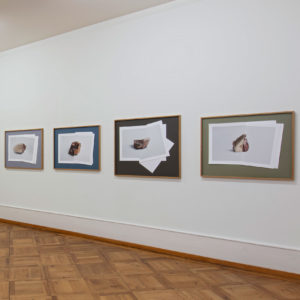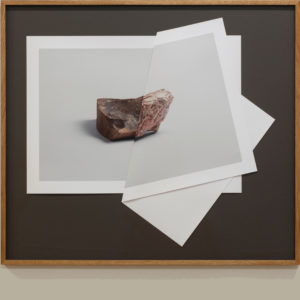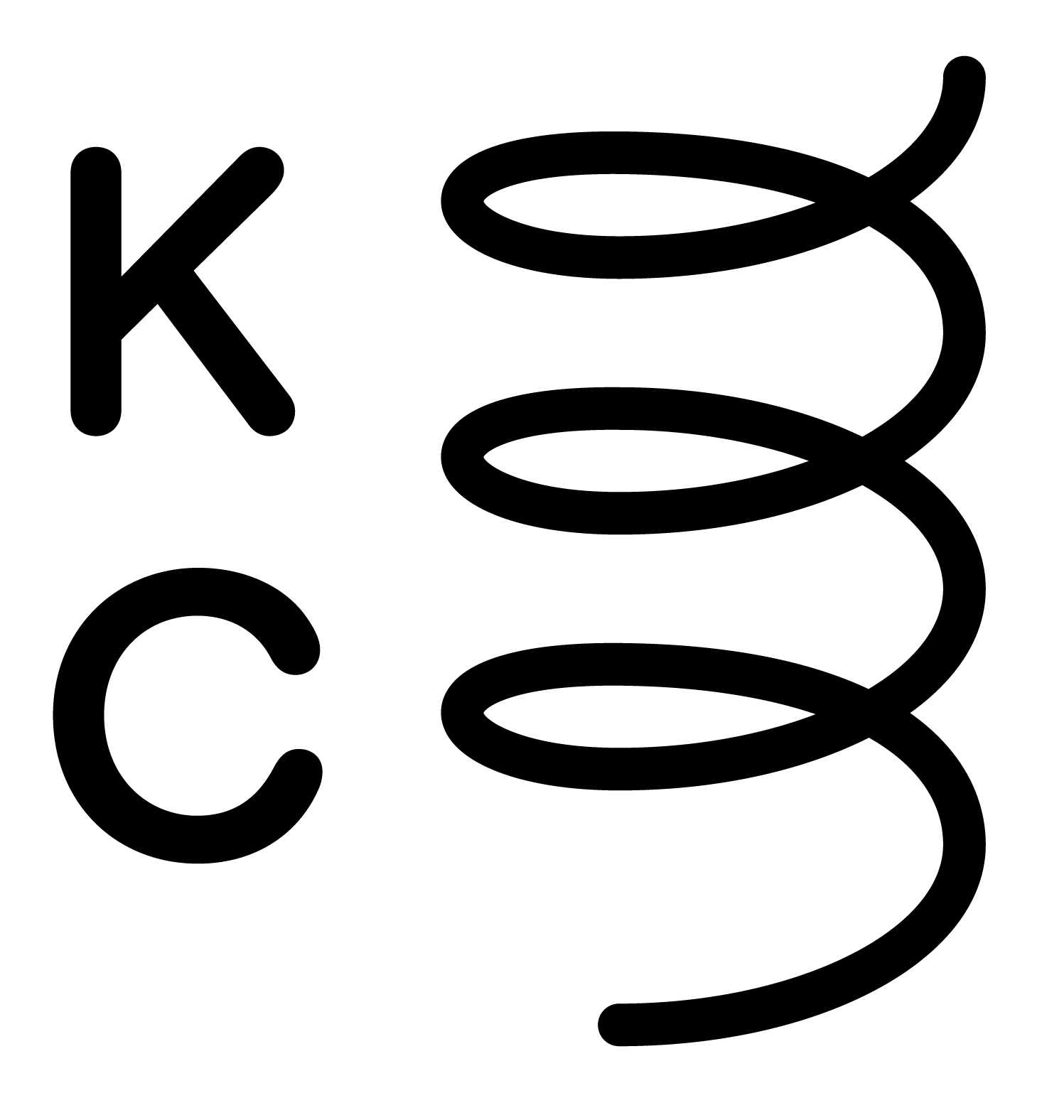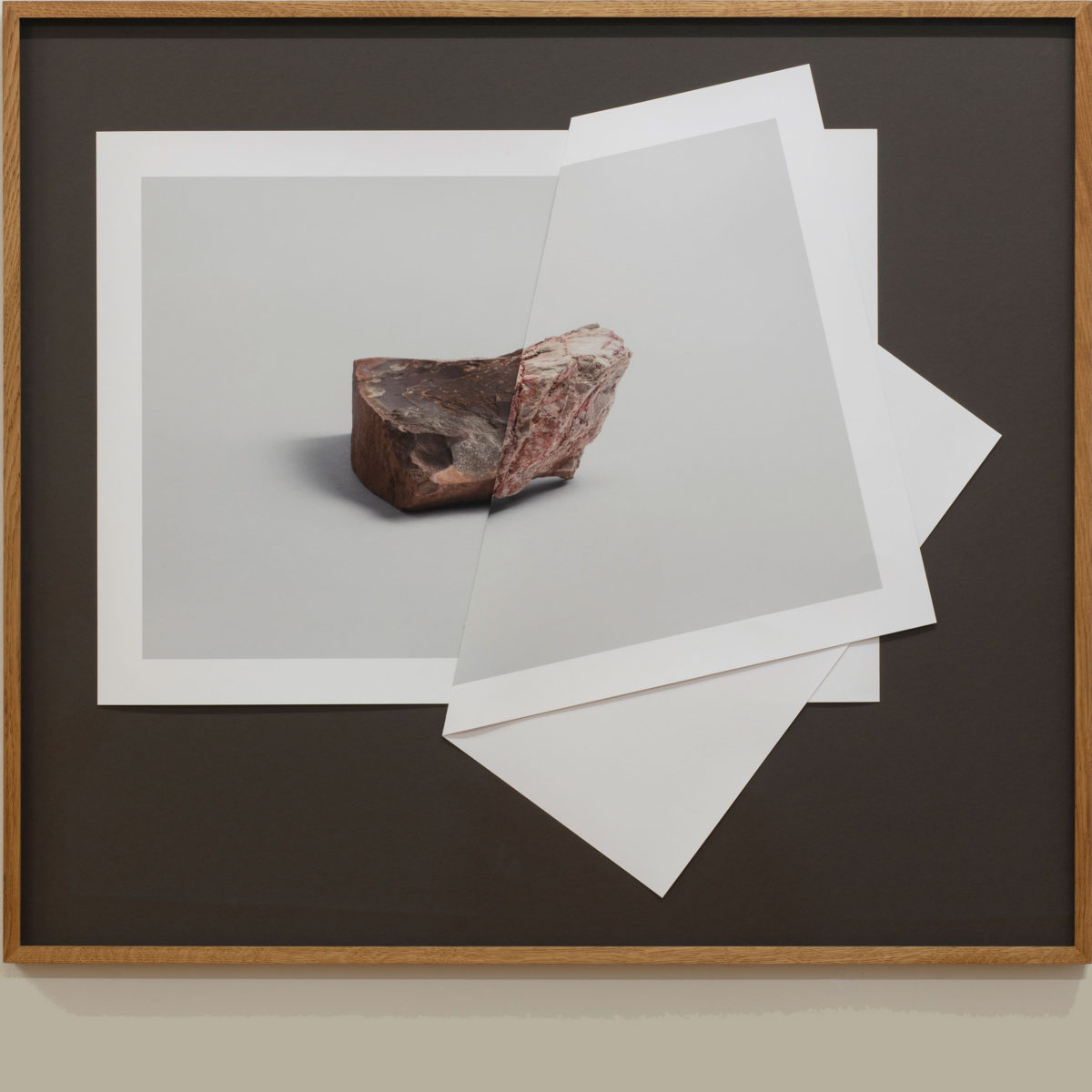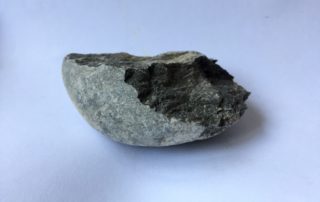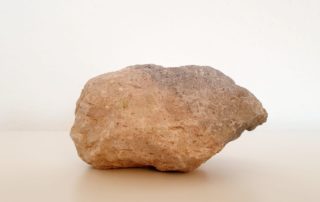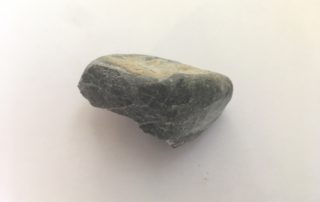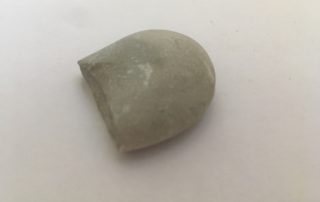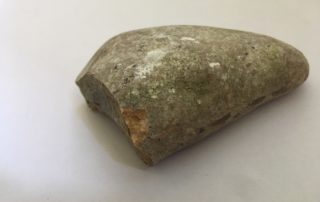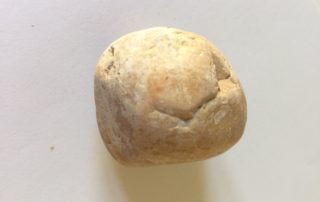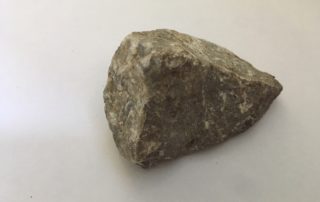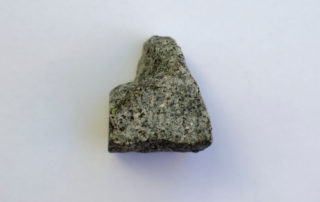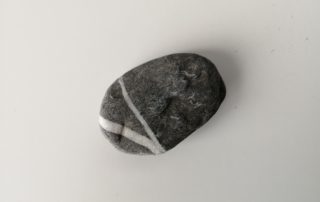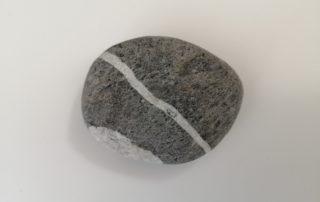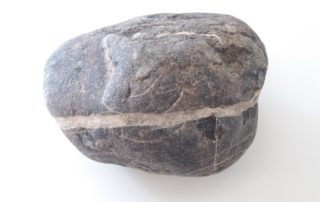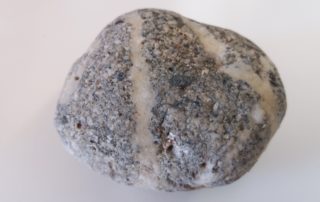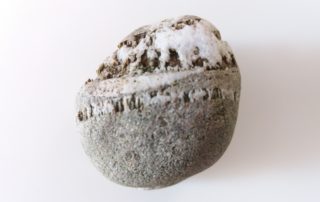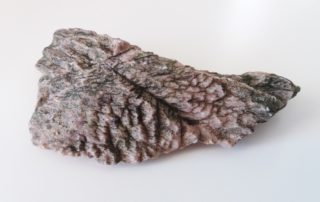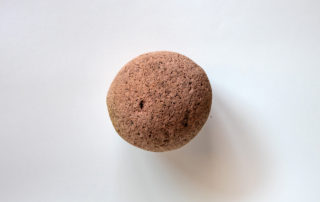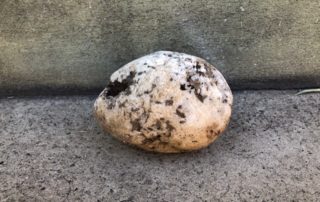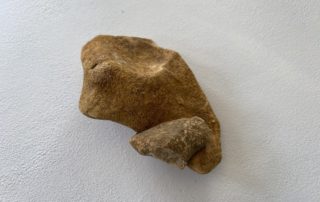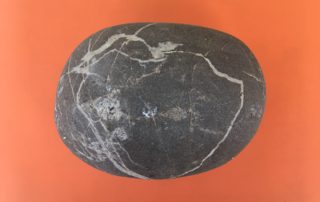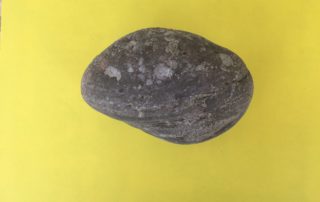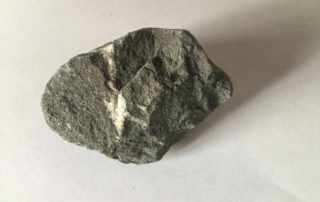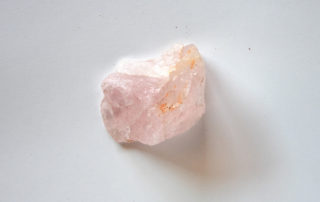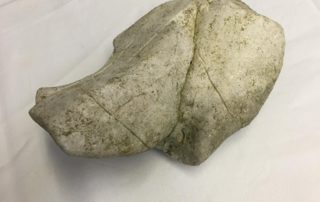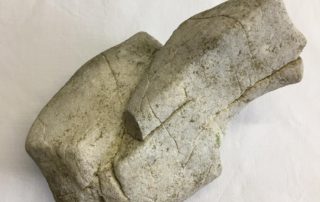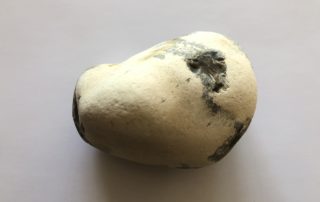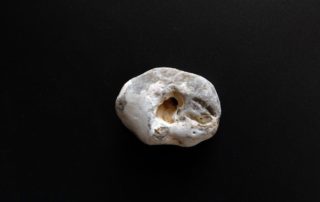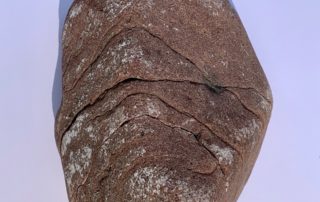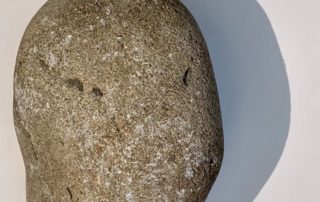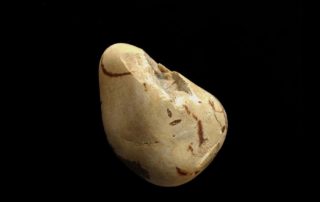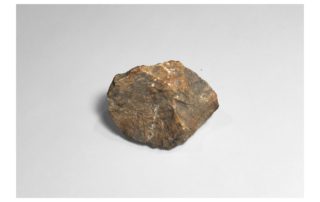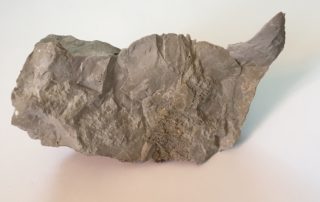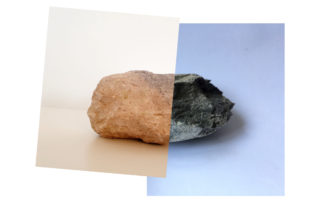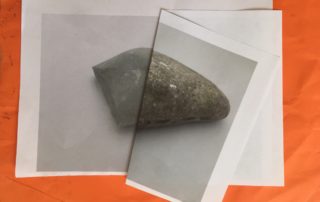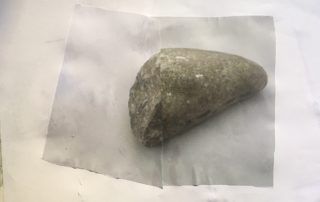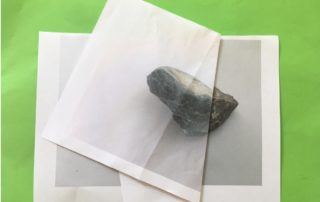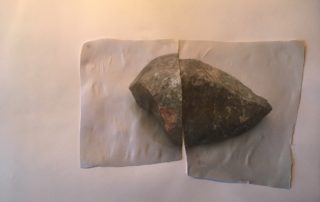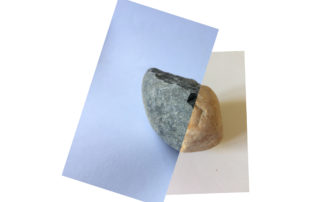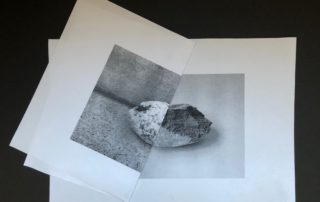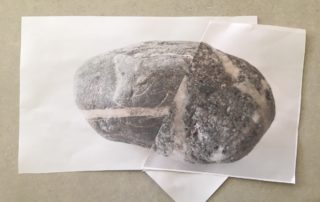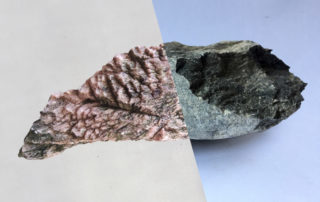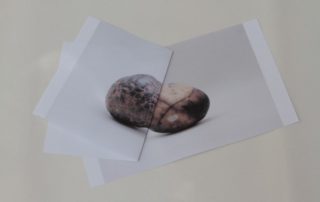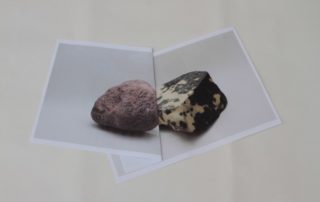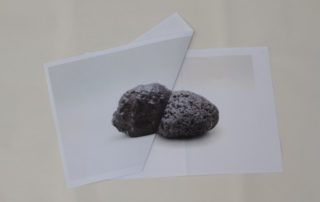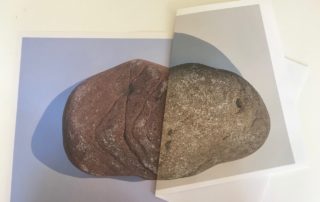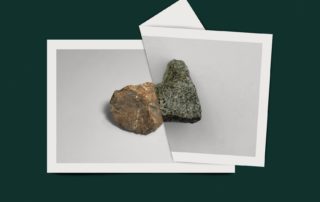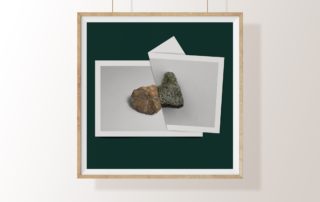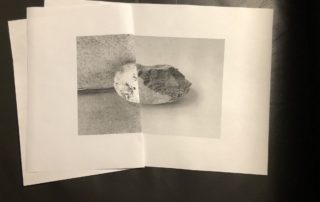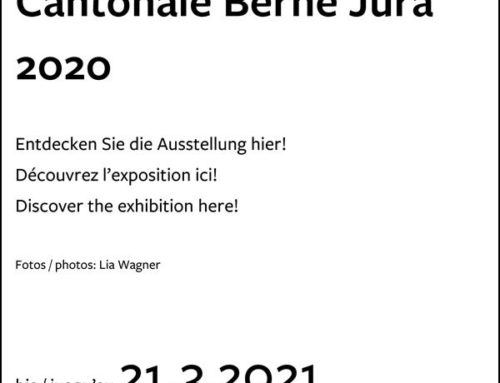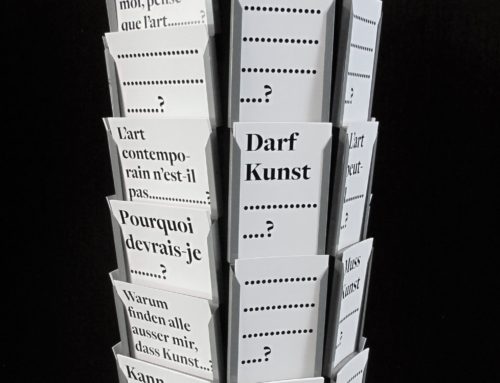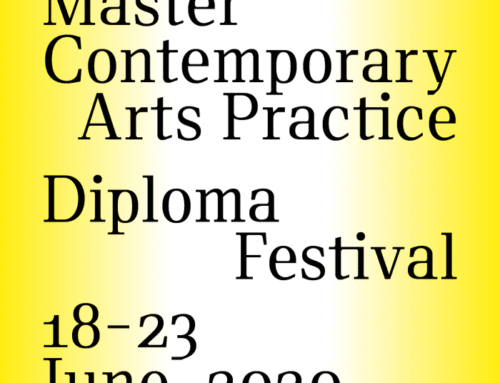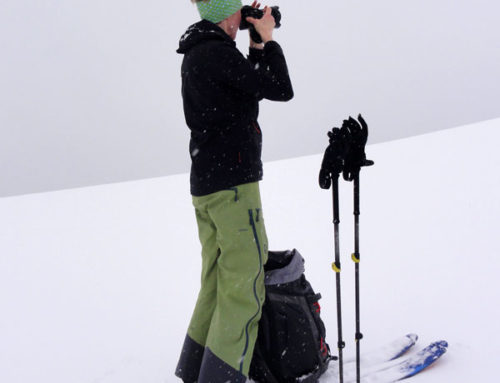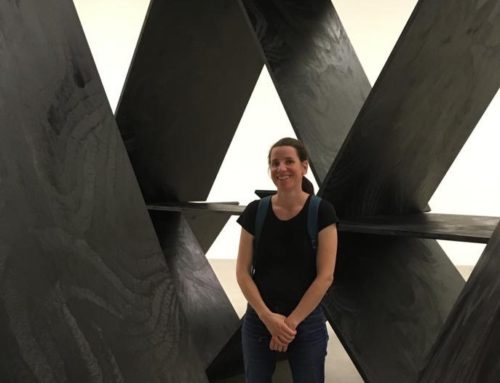Kapwani Kiwanga, Subduction Study #4, 2017, exhibition view Kunsthaus Centre d’art Pasquart 2020; Courtesy the artist and Galerie Tanja Wagner, Berlin; photo: Stefan Rohner; © Adagp, Paris, 2020
Instructions #collect:connect
The series Subduction Studies (2015-2017) by the artist Kapwani Kiwanga combines stones from the European and African continents, thereby focusing on the theme of past and future forms of living together. The activity #collect:connect is intended to connect places and their people with each other and create a sense of community. In this way, even from isolation at home each one of us can come together creatively with friends, family members and others.
We’re looking forward to a lot of stones from different places!
collect
Look for a stone in your surroundings. Place it on a monotone background and photograph it so that it occupies around 1/3 of the height of the image (see examples). Send the picture with information on the town and district it came from (in the header) to: info@pasquart.ch.
From the collection that we will continually upload on our blog, individual combinations of stones can be created. For this, see connect.
connect
Select two stones from the selection below, download the two images and print them separately. Fold one sheet so that an edge is formed. Now bring it together with the image of the second stone and stick the combined image on (coloured) paper. For those who don’t own a printer or would rather experiment on the computer: we’re also happy to receive digitally connected stones!
If you wish, we can post your resulting examples on Instagram. Please send your picture to info@pasquart.ch. If you post your stone combination yourself, we would be happy if you tag us on the picture or mention us in your comment.
Kapwani Kiwanga: Subduction Studies
In her series Subduction Studies (2015-2017) the artist Kapwani Kiwanga combines photographs of rock samples from the collection of the National Museum of Natural History in Paris, folding them in such a way that they complement one another. The folded pairs of photos connect a rock on the coast of Africa and another in Europe.
As the title indicates, the artist is referring to subduction zones, that is areas in which oceanic and continental plates converge, one tectonic plate moving over or under another plate. These zones are formed by earthquakes, volcanism, the bulging of land mass and through this the formation of new territory. The work recalls the ancient continent of Pangaea, that existed for 150 million years, and speaks of a future collision of the African and European continents. The speculation concerning a reunion with a Pangaea Proxima within the next 300 million years suggests that a new super-continent will arise, forcing the European plate to slip under the African. Not without humour, the artist picks up on the political potential of this geological probability. The work thus proposes a new continental configuration, a new territory. By folding the photos together, Kapwani Kiwanga not only shows a new stone, but also a new geo-political perspective through which two continents and their inhabitants would be geographically connected. The artist makes use of geology as a starting point here, in order to reflect on the relation between Africa and Europe or between complexities of colonialism and future forms of life.
Works in the exhibition:
Subduction Study #8, 2017
Subduction Study #5, 2017
Subduction Study #1, 2015
Subduction Study #4, 2017
Subduction Study #2, 2015
Pigment print, Courtesy the artist and Galerie Tanja Wagner, Berlin; photos: Stefan Rohner
